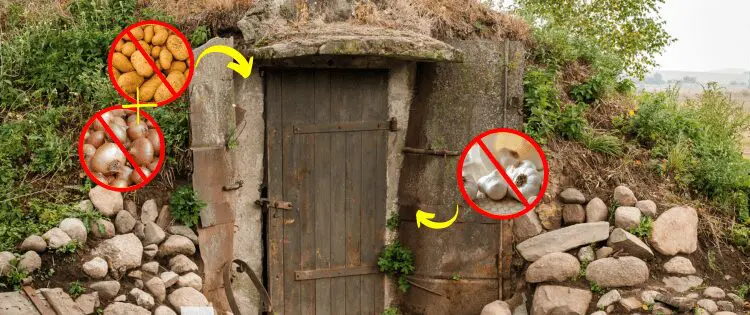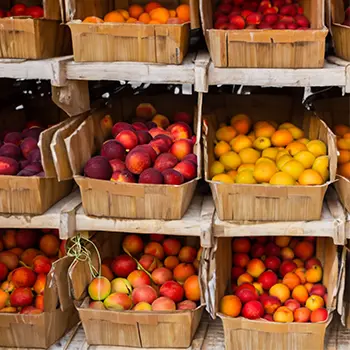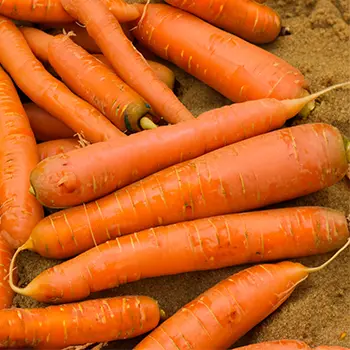Root cellars have been a convenient storage facility for food for centuries. They provide a dark, cool, and humid environment that helps prolong the shelf-life of fruits, vegetables, root crops, and other foods. While root cellars are excellent for preserving many types of food, the way these foods are stored is essential or they will rot. Here are some tips on how to store food in your root cellar.
Foods You Should Never Keep in a Root Cellar
There are two main foods you should not store in a root cellar, soft fruit and soft cheese. Here’s why.
Root cellars have a cool and humid environment and soft fruits such as berries, plums, and peaches, as well as soft cheeses such as Camembert, Brie, and goat cheese, require cool and stable conditions to maintain their texture and flavor. In a root cellar, the temperature can vary which can cause soft fruit and soft cheese to become extremely soft, develop mold, and spoil. The proper storage for these products is in the refrigerator.
A root cellar is a great way to store fruits and vegetables for an extended period, but not all foods are suitable for this type of storage. Some foods can emit gases or moisture that can negatively affect other items in the root cellar. Here are some foods you should generally avoid storing in a root cellar: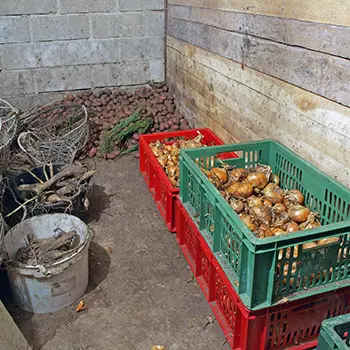
Potatoes and Onions Together: Potatoes and onions both release moisture and gases that can cause spoilage in each other. They should be stored separately in their own bins or containers.
Related: 10 Foods Not To Store
Tomatoes: Tomatoes are typically best stored at room temperature. Cold storage in a root cellar can cause them to lose flavor and develop a mealy texture.
Garlic and shallots: These allium vegetables prefer dry conditions, so storing them in a humid root cellar can lead to mold and spoilage.
Leafy greens: Vegetables like lettuce and spinach have a short shelf life and do not store well in a root cellar. They are best consumed fresh or preserved through canning or freezing.
Remember that the specific conditions of your root cellar, such as temperature and humidity levels, can also affect what foods can be stored successfully. It’s important to monitor and adjust the conditions in your root cellar to meet the needs of the items you intend to store. Additionally, regular inspection and rotation of stored items can help prevent spoilage and waste.
Foods You Can Store in a Root Cellar
Nuts
If you have an abundance of nuts, storing them in a root cellar is a great way to keep them fresh as long as you maintain the right conditions. Here are some tips:
Container: Use an airtight, vacuum-sealed, dark container. A dark container is essential because nuts are sensitive to light and exposure so it can cause them to turn rancid.
Keep Them Dry: Moisture is bad for nuts; therefore, you will need to ensure the root cellar is kept well-ventilated and dry. If required, use a dehumidifier.
Temperature Control: The ideal temperature for storing nuts is between 32 F to 45 F.
Fruits
Root cellars are excellent for storing hardy fruits such as apples and pairs.
Containers: Use baskets, crates, or boxes to store fruits. Make sure these containers are well-ventilated to prevent mold growth.
Packing Materials: Line the storage containers with packing materials such as newspaper, sawdust, or straw. These materials provide insulation help absorb excess moisture and prevent rotting. Wrap fruits such as pears and apples in paper to slow down the release of ethylene gas.
Separate Fruits: Fruits emit natural gases such as ethylene which can either ripen or spoil other fruits and vegetables. To prevent this, separate all fruits and vegetables.
Temperature and Humidity: Root cellars help provide naturally humid and cool environments which are ideal for many fruits. Keep the temperature between 32 F to 45 F and humidity levels around 90%.
Shelf Storage: Store fruits on shelves instead of on the floor, this prevents direct contact with the cold which prevents the fruit from freezing and spoiling.
Vegetables
Wash and Sort: Start by washing the vegetables properly to remove any debris or dirt. Be sure to dry them completely to avoid storing them wet because wet vegetables will cause mold. Sort them by throwing out spoiled or damaged vegetables to prevent the rot from spreading.
Containers: Use bins, baskets, or crates made from metal, plastic, or wood to store vegetables. These containers allow air circulation, preventing mold growth and moisture build-up. Stay away from airtight containers because some vegetables need good ventilation.
Proper Storage: For root vegetables such as potatoes, beets, and carrots, store them in bins or boxes filled with straw, sawdust, or damp sand. These materials help maintain the right moisture levels. Layer the vegetables between these materials ensuring they don’t touch each other directly. Onions and garlic need to be stored in a well-ventilated, dry area. Hanging mesh bags in the root cellar is a great way to store these vegetables.
Proper Ventilation: Make sure your root cellar is well-ventilated to prevent the build-up of ethylene gas.
Shelves: Like fruits, don’t leave vegetables on the ground because the direct cold can make them freeze and rot. Instead, store them on shelves.
Meats
It is possible to store meat in a root cellar; however, even with proper packaging raw meat will only last a few weeks so it’s best that you store it in the freezer. The best meats to store in a root cellar are dried, canned, or preserved meats.
Dried Beans
Storing beans in a root cellar is a great way to keep them fresh for extended periods. Here are some tips:
Containers: Choose airtight containers such as mylar bags, plastic bins, or glass jars. To keep track of the bean’s freshness and rotation, label each container with the type of beans and date of storage.
Vacuum Sealing: An excellent way to store beans is to use the vacuum seal method. The removal of air further prevents oxidation ensuring the beans stay fresh.
Avoid Mixing Beans: If you are storing different bean varieties, keep them in different containers to avoid flavor transfers.
Additional Tips for Storing Food in a Root Cellar
Here are some additional tips for storing food in a root cellar: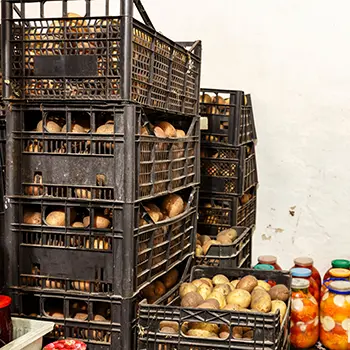
Clean Often: Prevent the build-up of pests and mold by cleaning often. Sweep the floors, wipe down the surfaces, and throw away any decaying food.
Organize and Rotate: Use the first in first out (FIFO) method to store your foods. Use older items first and replace them with fresh ones.
Check for Spoilage: Regularly inspect food items for signs of spoilage such as mold and softness. Throw out spoiled food immediately to prevent it from spreading to other items.
Prevent Odors: Store vegetables such as turnips and cabbages in a detached root cellar to prevent their unpleasant odor from permeating your house.
Avoid Mixing Odors: Strong odors transfer to each other; therefore, make sure all foods are stored separately.
Stocking Time: Stock your root cellar as late in the season as possible. It’s also a good idea to store your food items in the fridge before putting them in the cellar.
By following the above guidelines, you can ensure that any foods you store in a root cellar are kept fresh until you are ready to use them.
You may also like:
How To Store Food Without Electricity That Can Last Up To A Year (Video)

